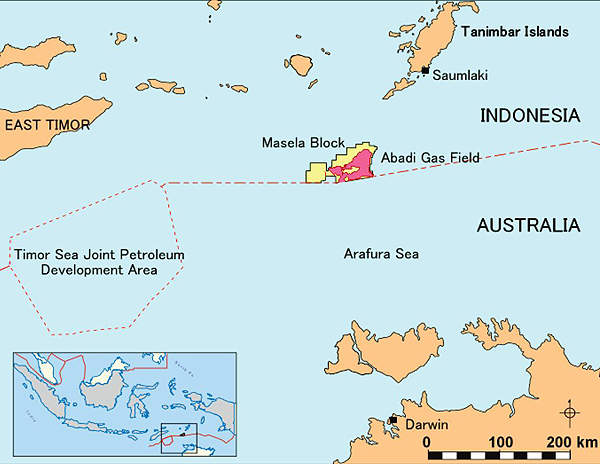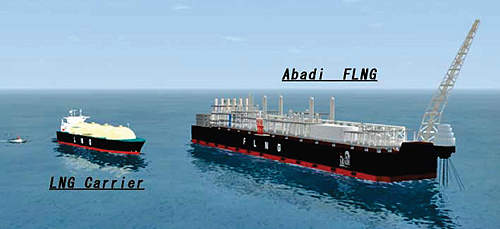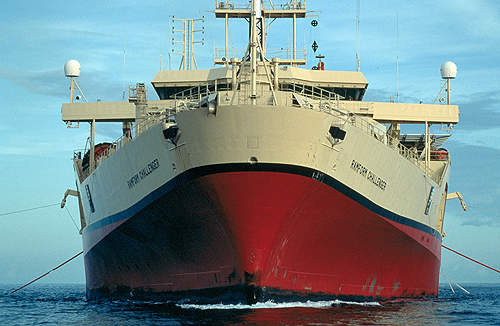The Abadi gas field is situated in the 3,221km² Masela block in the Arafura Sea, Indonesia. The field lies in water depths ranging 984ft-3,281ft.
Inpex Masela, a subsidiary of Japan-based oil and gas company Inpex, operates the field. Inpex earlier owned a 90% interest in the field but in July 2011 transferred 30% to Shell. Abadi is a large-scale project and Inpex invited Shell Upstream Overseas Services as a strategic partner to use its expertise in floating LNG technology. PT EMP Energi Indonesia owns the remaining 10%.
A production sharing agreement for the field was signed in November 1998, covering 30 years. The plan for development of the field was submitted in September 2008 to BPMigas, the Indonesian Government authority responsible for oil and gas upstream business, and the same was approved in December 2010. First production of gas is expected in 2018 with an initial output of 2.5 million tonnes of LNG a year and 8,400 barrels per day of condensate.
In November 2012, the Indonesian subsidiary of Wood Group was commissioned to conduct front end engineering and design (FEED) of subsea production facilities for the development of the LNG project. The FEED study is expected to be completed in one year. The scope of the FEED contract includes detailed engineering for subsea, umbilical, riser and flowline (SURF) works.
Discovery
A 2D seismic survey was carried out in the block using marine vessel Geco Rho between February and March 1999.
The Abadi field was discovered by the Abadi-1 exploration well, which was drilled between October and December 2000 by the Energy Searcher rig. The confirmed presence of gas and condensate was the first discovery of crude oil and natural gas in the Arafura Sea.
Between July and September 2001, a 3D seismic survey was carried out using the PGS Ramform Challenger marine vessel. In 2002, two appraisal wells, Abadi-2 and Abadi-3, were drilled to examine the extent of reserves of the field. Abadi-2 was drilled by the Energy Searcher rig and Abadi-3 was drilled by the Ocean General rig.
Four more wells drilled between May 2007 and June 2008 confirmed the presence of significant gas reserves.
Abadi geology and reserves
The Abadi field reservoir is of the Middle Jurassic Plover Formation and located at depths ranging between 3,700m and 3,900m. The reservoir contains shallow-marine, highly mature, quartzose sandstones.
The field is estimated to contain ten trillion cubic feet of natural gas reserves.
Field development
The field will be developed in phases using a subsea production system and a floating LNG facility (FLNG). About 18 directional production wells are expected to be drilled from five subsea drilling centres. Initial development will be carried out in the northern part of the field, where most of the reserves are concentrated.
The exploration well is expected to be drilled in 2013.
TIn January 2013, Inpex awarded the FEED contract for the floating LNG (FLNG) of Abadi gas field to JGC and PT Saipem Indonesia Group.
The two groups will separately conduct FEED studies on the FLNG. The company which will provide the winning FEED design will be awarded the engineering, procurement and construction (EPC) contract for the FLNG.
The FEED studies are scheduled for completion in 2013. The engineering, procurement and construction contracts are expected to be awarded between 2014 and 2018.
Floating LNG facility
The floating LNG facility will feature the integration of proven technologies such as FPSO, baseload onshore LNG plants and LNG carriers. It will include an LNG loading plant, an LNG storage tank and a loading facility similar to that available on a conventional FPSO.
The floating LNG concept was chosen for the field because it reduces the environmental impact of constructing an onshore facility in terms of the land, harbour and infrastructure facilities required.
The MetOcean conditions at the field also favoured the design and operation of the floating LNG facility. In addition, the concept is expected to reduce the costs incurred and the project lead time.
The project partners are expected to invest $19.6bn in the facility, which will be installed about 170km south-west of the city of Saumiaki.
Production
The feed gas produced will be collected through the subsea drilling centres and transported to the floating LNG through flexible production risers. The gas will be processed and liquefied on the floating LNG. The LNG and condensate will be stored in the floating LNG, and offloaded at regular intervals through LNG carriers.




